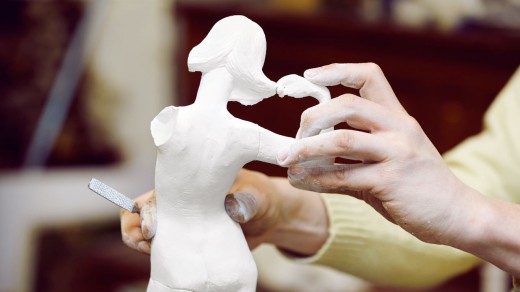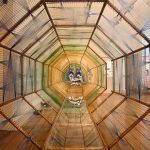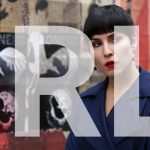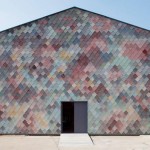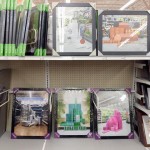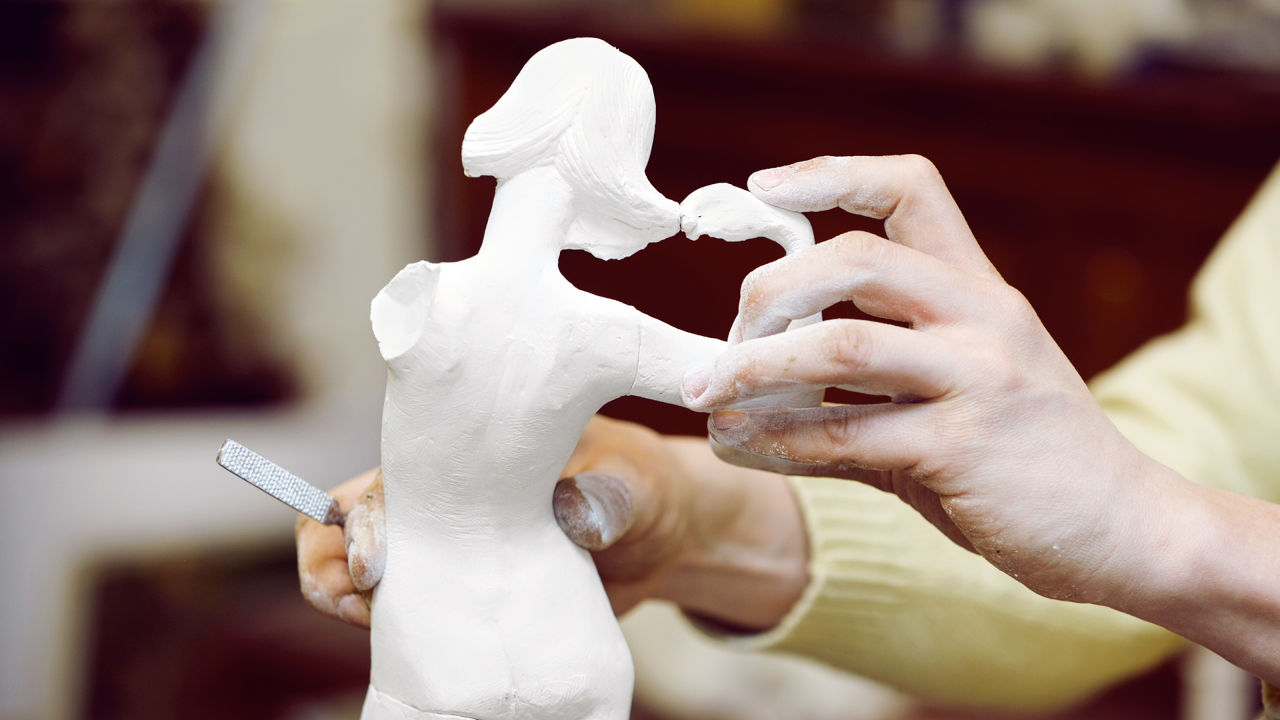Welcome To The Brave New World Of The Corporate-Sponsored Artist
From Amtrak to Facebook, it seems like everyone is launching an artist-in-residence program. But can art and commerce thrive together?
On Whidbey Island, off the coast of Washington State, there is a quaint farmhouse called Hedgebrook.
Since 1988, the bucolic, brown-shingled, chimney-warmed wonderland has hosted a writers-in-residence program for women. Every year, 45 women—out of the 15,000 that apply—get to spend between two and six weeks on the property. These lucky few have the opportunity to stay in a cottage nestled in the woods and to write to their heart’s content. All expenses are covered: during the day, meals are brought to them, and in the evening, over dinner prepared by an in-house chef, they spend time getting to know each other. For this brief period, writers have a charmed, idyllic existence. “We provide our writers this beautiful alchemy of solitude and community,” says Amy Wheeler, Hedgebrook’s executive director.
It has never been easy for writers and artists to pursue their craft: art takes time and does not, in most cases, result in much monetary payoff. In the ancient world, fortunate artists would find patrons from either the aristocracy or the church who would sponsor their work. Since the 1900s, nonprofit organizations like Hedgebrook have stepped in to fill this role with residency programs that are usually funded by wealthy donors or public donations. Yaddo, in Saratoga Springs, New York, is perhaps the most famous such place. The Alliance of Artists Communities tracks these programs: there are currently over 200 in the U.S.
But over the last couple of years, a new variety of artist-in-residence program has entered the scene, this time sponsored by big companies. Last year, Amtrak launched a residency inviting authors to write while traveling an itinerary of their choice. In San Francisco, the software company Autodesk invites artists to spend up to six months working in their facilities, giving them a stipend and funds for their materials. Facebook has also quietly launched its own artist-in-residence program, where artists are paid to create artwork that will adorn the walls of its buildings. Hotels are in on the trend as well: The Standard East Village hotel hosts a writer’s residency in partnership with The Paris Review, while the Ace Hotel New York has what it describes as a micro-residency, where guests spend a single night at the hotel and write a short story. (I wrote about the latter earlier this year.)
Meanwhile the T-shirt company Threadless has a resident graffiti artist. Siemens offers a musicians-in-residence program through its hearing aid division, while Kohler has been inviting visual artists to use its industrial equipment to create sculptures for some time. Honeywell is also currently in the thick of developing its own residency program and is hoping to learn from other companies that have already done so.
Welcome to the brave new world of the corporate-sponsored artist. Many in the art community are excited about the possibility of this new influx of funding from the corporate sector. “Anything that is opening up more space for artists to do their work is a great thing,” Wheeler tells me. But at the same time, this mixing of capitalism and art raises some questions: What is really motivating companies to do this, and how do they account for it in their bottom line? And what do they expect in return for their sponsorship?
The Autodesk Residency: An Extra-Creative Focus Group
Maria Finn, a writer and artist who lives on a houseboat in Sausalito, California, has a mild obsession with fish. At one time, she worked in the commercial fishing industry in Alaska and today, she creates works of art that have often have to do with fishing and fish. Through the grapevine, she discovered that Autodesk was inviting artists to participate in a three- to six-month residency at Pier 9, the company’s digital fabrication workshop in San Francisco. But what sold her on the idea was that Pier 9 happens to have an industrial-sized kitchen equipped with the best cooking technologies that artists are invited to use. She applied, was accepted and was promptly christened the “Kitchen Resident.” She received a monthly stipend of $1,500, had access to a host of industrial tools and instructors who could help her use them, and Autodesk paid for all of her art supplies.
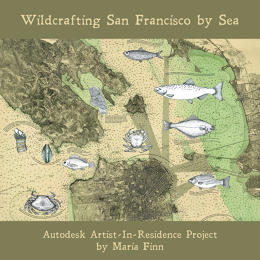
One of her favorite parts of the residency was the opportunity to work alongside 15 other artists working across different media. Since Autodesk produces architectural and engineering software, many artists drawn to this particular residency have backgrounds in technology and industrial design. Finn was a bit out of her depth when it came to using a lot of the equipment and machinery at Pier 9. But the artists quickly formed a tight-knit community and were invested in helping one another learn. At one point, she thought about doing a project that highlighted the beauty of salmon skin; another artist showed her how to tan the skin while another helped her transform it into LED lights.
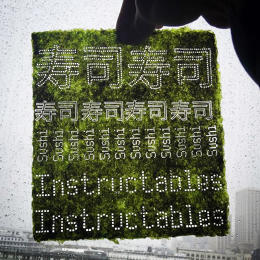
This kind of collaboration is an important part of Autodesk’s ethos. In 2011, the company acquired Instructables, a website specializing in user-generated “how-to” projects that is very popular within the maker movement. The logic was that by getting to know the people who are using technology in new, creative ways, Autodesk would be able to gather feedback to better respond to users. Noah Weinstein, worked at Instructables from its inception in 2005 and is now the senior creative programs manager at Autodesk. He has been instrumental in bringing the residency to life. “Artists are great explorers and discoverers when it comes to using technology,” he tells me. “They are asking the software to do things that it does not usually do; they point out when things do not work and shed light on new functionalities at the cutting edge.”
Weinstein explains that with this residency, Autodesk has the opportunity to put the the people who are making the software next to the people who are using it it in extraordinary ways. “The goal is to create a community where you have people involved in making things at every stage of the process, from the software to the final product,” he says. “We only ask that artists document what they are doing on Instructables so others can learn. The whole point of the residency is to reveal more about the making process.”
Autodesk sees the residency as a sort of turbocharged focus group, not just an opportunity to support the arts. But from the artists’ perspective, the program is mutually beneficial: not only are they funded as they carry out their projects, they can also help to shape technology that is useful to them in their work. And importantly, Autodesk makes it clear that it does not lay claim to the rights to any of the artists’ intellectual property, so anything that they create while on site is entirely theirs to keep or sell.
For her part, Finn loved being a resident. During her months at Pier 9, she explored a range of new crafts in the kitchen. She brought in expert sushi makers who explained the intricacies of Japanese cooking and invited a mushroom artist to speak about his attempts to create housing materials out of the fungus mycelium. But her big project was to create a beautiful and intricate wildcrafting map of the San Francisco Bay, with details about where particular fish, crabs, and seaweeds can be found. Another Autodesk resident, Iris Gottlieb, illustrated the map, which is both deeply informative as well as visually stimulating. It is inspired, in part, by the ancient craft of cartography. Finn says that without the resources that the residency afforded her, she would never have been able to create such a detailed, time-consuming, and rewarding project.
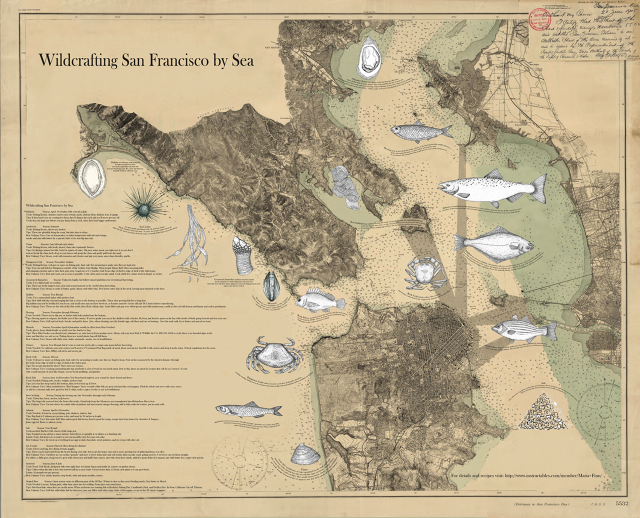
The Amtrak Residency: A Social Media Explosion
In late 2013, PEN Ten Magazine interviewed the novelist Alexander Chee. When asked about his favorite place to write, he said, “I still like a train best for this kind of thing. I wish Amtrak had residencies for writers.” This sparked some excitement on social media, as authors tweeted about how awesome a train-writing residency would be.
It turns out, Amtrak’s social media team was listening. When Alicia Lee, Amtrak’s senior communication specialist for social media, brought up the possibility of a residency with the company’s management, everybody assumed she was joking. But when they realized she was serious, they quickly came onboard with the idea, encouraging the three-person social media team to take charge of the nascent program. Amtrak was immediately inundated with 16,000 applications—many more than they had expected. Amtrak eventually enlisted the help of Random House and four judges to help curate the process. “This was all very new to us: we’re in the train business,” Lee says. “Random House was able to give us a 101 on how to process all of these applications.”
For Amtrak’s social media team, which thinks primarily about exposing the brand to wider audiences, this residency was a huge win. Not only did 16,000 writers apply, many of them also shared their excitement about the residency with their followers on social media. Those selected to be residents are also encouraged to write posts on the Amtrak blog, which will lead to a spike in web traffic. “We exposed our long-distance service to a huge audience,” Lee says. “When people think about trains, they think about the Northeast or the Pacific Northwest corridors. But with this residency, we were getting more eyeballs on other parts of our service, including cross-country travel.”

Lisa Schwarzbaum, who has recently started writing books after a 20-year career as a film critic for Entertainment Weekly, was among the first writers selected for the residency. As someone who has already amassed a large following of readers, she was an ideal candidate to represent Amtrak. She took her writing trip in January and found it to be a productive time to work. “After a lifetime as an entertainment writer, spending time looking out the window and not at a movie screen was really cool,” she says. Unlike many grants in which writers are expected to demonstrate what they have produced, Amtrak does not place any responsibilities on their writers. Schwarzbaum liked the idea of simply being able to clear her mind. “For me it was just about talking to people and watching the country go by at the pace that a train goes,” she says. “It was about looking outward, but from what I hear from other Amtrak writers, many used it as an opportunity to look inward.”

Glen Weldon, the author of Superman: The Unauthorized Biography and an NPR contributor, has recently been selected to be an Amtrak writer-in-residence. He’s looking forward to a lot of uninterrupted writing time that will hopefully allow him to finish up a chapter in his upcoming book. “From what I can tell, the Wi-Fi on Amtrak is not that great, and really, that was a huge selling point,” he says. “The thing that this affords you is the time to do nothing but write, with absolutely no distractions.” He points out that many writers, including himself, do not have the luxury of writing full time; most have day jobs, fitting writing into nights and weekends. A residency like this one offers the possibility of tackling a larger project without any other responsibilities.
Weldon says that he’s had many conversations with friends about what Amtrak is getting out of this residency. “The assumption is that I will need to write something for them,” he says. “This is capitalism and a corporation after all.” However, the terms of the contract do not require writers to do work for Amtrak or hand over their copyright. At worst, it is a big publicity stunt, and for Weldon, that’s a pretty benign objective. “I tweet incessantly—mostly a lot of dad jokes—and will no doubt continue to do this while I am on the residency, and I may even use the residency hashtag,” he says.
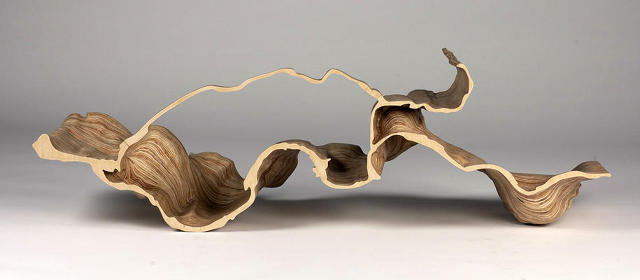
The Facebook Residency: Perhaps Better Described as a Commission
Facebook has taken the exact opposite approach from Amtrak. Its residency program is shrouded in mystery: there has been barely any press about it at all, and it is hard to find any information about it online. There is a small Facebook group devoted to the residency, but it has less than 1,000 followers, which is a lot fewer than you’d expect for a company that, well, invented the Facebook group. There is no formal application process and to become a resident, you basically need to know the guy who runs the program. (He prefers to remain unnamed so that he is not deluged with requests from artists.) And another important thing about it is that Facebook ultimately owns the work that the artist produces.
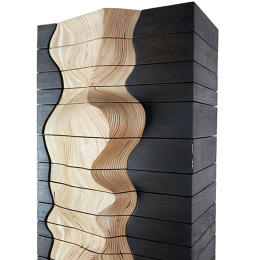
Adrien Segal, an artist based in California, creates very large sculptures, often out of wood, that provide insight about the places where humans and nature overlap. She is also a residency aficionado: she’s participated in programs across the country, including with Autodesk. Segal found out about the Facebook residency through a former professor of hers who had done it. She thought it would be fun to spend a couple of months on the Facebook campus doing a project, so she reached out to Facebook via Facebook (of course) to propose collaborating on a project, and the company took her up on her proposal. “Since doing it, I get a lot of emails from artist friends who want to know how they can do it as well, since there is no open application,” she says. “That’s not really how it works. The person running the program has his own aesthetic and agenda; he seeks out people whom he thinks would be a good fit or will occasionally accept a proposal from someone who contacts him.”
Segal thinks that it might be a misnomer to call this an artist-in-residence program. The concept of a residency calls to mind the kind of benevolent hospitality that an organization like Hedgebrook stands for. Instead, Facebook’s program is better described as a commission. Segal was given a fee of $10,000, plus the cost of materials to produce a work of art that Facebook will display on their campus. “Facebook points out that since all of the work that is produced for them is kept on site—either because they are murals or sculpture—none of that work can be resold or removed without destroying it,” she says. And from Segal’s perspective, commissioning art is just another way to support artists.
These kinds of complications about terminology are par for the course as more companies jump on the residency bandwagon. After all, each company appears to have its own idiosyncratic motives for bringing on artists and writers. In most cases, though, they are open about what they stand to gain from a residency program, and the art community is grateful for this honesty—not to mention the cash. The primary concern of the artists and writers is that these companies don’t influence what they choose to create or own the rights to what they produce.
While these new corporate-sponsored residencies are not entirely altruistic, the artists and writers I spoke with were thrilled about the new opportunities they create to fund the arts. Even Amy Wheeler, who runs the old-school Hedgebrook residency, believes these new programs are doing plenty of good.
“It sends a cultural message that artists are valuable,” she says. “And the work they do is important.”
[Sculpting: Pavel L Photo and Video via Shutterstock]
Fast Company , Read Full Story
(139)

